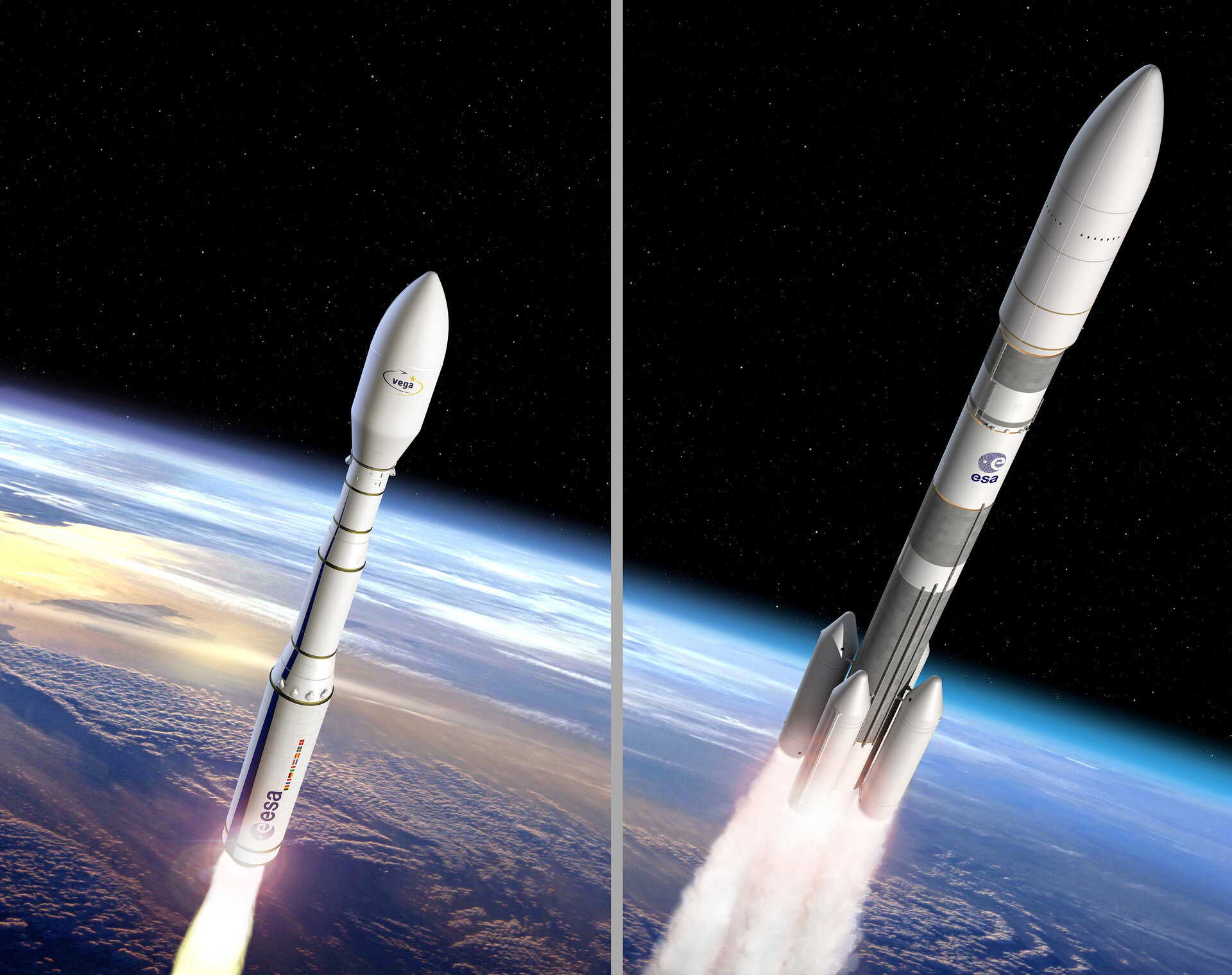Analysing the impacts of both the Ariane 5 and Vega programme
Launchers are the second largest area of space-manufacturing activity in Europe after commercial satellites, boosting European industry.
Currently, a new joint European effort is responding to changes in the competitive launch services market. It was at the ESA Council meeting at Ministerial level in December 2014 in Luxembourg that Member States decided to begin development of a new-generation launcher, Ariane 6 and a more powerful version of the Vega vehicle, Vega-C.
These decisions were accompanied by a change in the governance of the European launcher sector, which is now based on a balanced sharing of responsibility, cost and risk by ESA and industry.
The efforts of Member States in developing and sustaining Ariane and Vega have established well-recognised European industry competences that allow industry to participate in international tenders.
In 2014, ESA with an independent consulting team undertook an ex-post study to assess the direct, indirect and induced socio-economic impacts of the Ariane 5 programme and of the Vega programme – globally, at European level, and within the economies and industries of each ESA Member State.

The assessment of the socio-economic impacts allows the evaluation of the return on public investments in launchers through ESA from a wider perspective, beyond purely economic terms.
The scope of the Ariane 5 ex-post and Vega impact assessment covered commitments from 1986 to end 2012 and focused on the economic impacts of the Ariane 5 programme including employment, government revenues and enabled revenues (direct financial effects), qualitative effects (such as research, production processes, facilities, management, commercial image, new business), impacts on the Guianese economy, wider effects on the global economy (impact on European launcher enabled space industry, European households and governments and European non-space industry), and alternative scenarios.
In the framework of the study, the economic impact of the European launcher programmes was measured through a GDP impact defined as the straight economic activity deriving from the funding from Participating States channelled through ESA into the space manufacturing industry.
To read the in-depth article that discusses the results of the study click here or on the link (European Launchers: -50% cost reduction target and 2.2 GDP impact) on the right of this page.




